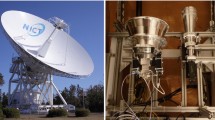Abstract
The University NAVSTAR Consortium (UNAVCO) Boulder Facility is assessing Very Small Aperture Terminal (VSAT) technology for near real-time transmission of GPS data from a remote receiver to a central processing facility. The study is motivated by the need for a robust, cost-effective data communications solutions to transfer GPS data from remote sites where no other communication alternatives exist. Future large-scale plate boundary deformation initiatives using spatially dense networks of GPS will require receivers to be located where the science dictates, and not the power or communications infrastructure. For other applications, such as determining rapid GPS orbits and time transfer, there is a push toward reducing the latency in GPS data used to produce GPS data products and differential corrections (Talaya & Bosch, 1999; Jackson, Meertens, & Rocken, 2000; Muellerschoen, Bar-Sever, Bertiger, & Stowers, 2001), and to support upcoming Low Earth Orbiting (LEO) missions requiring low latency, 1-s GPS data. In this paper we evaluate two Ku-band systems, the Nanometrics Libra VSAT and the StarBand 2-way satellite Internet VSAT. The Nanometrics system test results show that continuous, 1-s GPS data can be streamed from multiple remote stations within the VSAT footprint, quality checked, and delivered for processing with a <2.5-s latency (mean 1.2 s) and a 99.8% reliability. Benefits of the Nanometrics system include global coverage, control of bandwidth allocation and data hub, and the low power draw of the system. Negatives include the cost of hub and remote infrastructure and the need to negotiate landing rights issues on a country-by-country basis. The UNAVCO Facility currently operates a Nanometrics hub and three remote VSAT systems.
The StarBand system showed 98.9% reliability with a maximum latency of 10.2 s (mean latency 1.7 s) for 1-Hz GPS data and an average uplink speed of 31.7 kbps. Benefits of the StarBand system include the cost and small profile of the remote antenna. Negatives include coverage limited to coterminous United States and the high power draw of remote systems. © 2002 Wiley Periodicals, Inc.
Similar content being viewed by others
Author information
Authors and Affiliations
Rights and permissions
About this article
Cite this article
Jackson, M., Meertens, C., Ruud, O. et al. Real-Time GPS Data Transmission Using VSAT Technology. GPS Solutions 5, 10–19 (2002). https://doi.org/10.1007/PL00012908
Published:
Issue Date:
DOI: https://doi.org/10.1007/PL00012908




